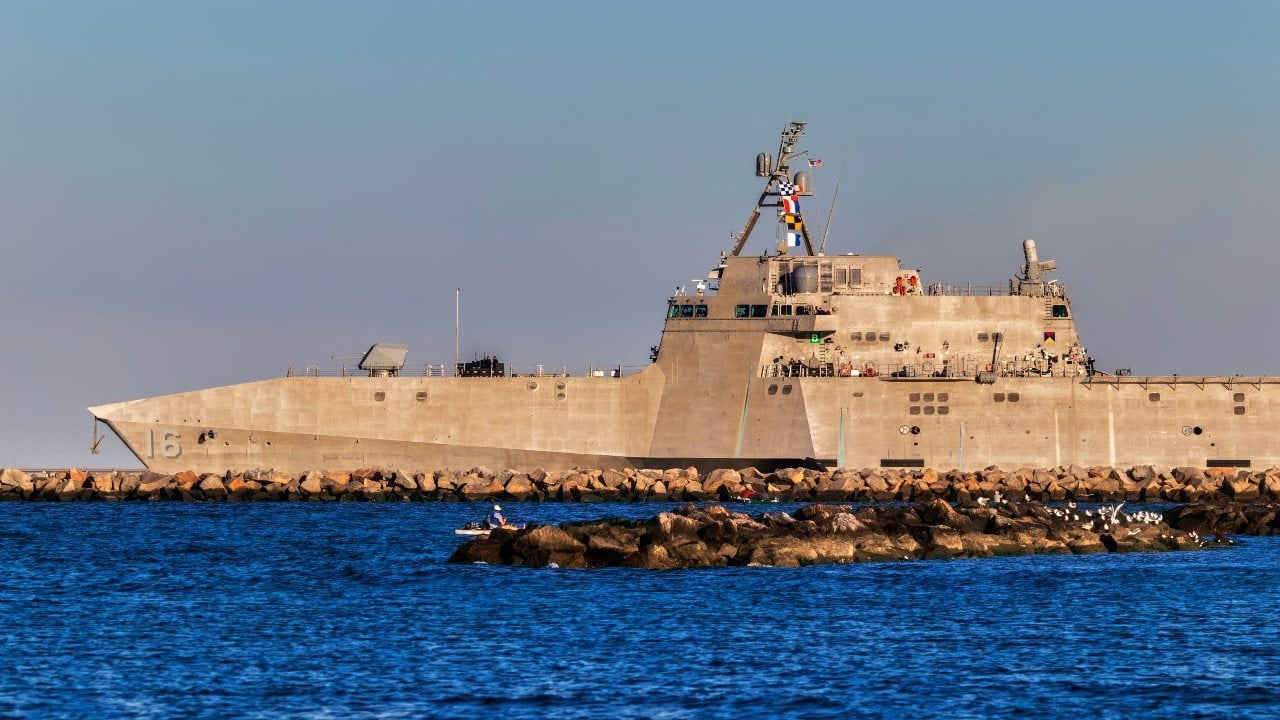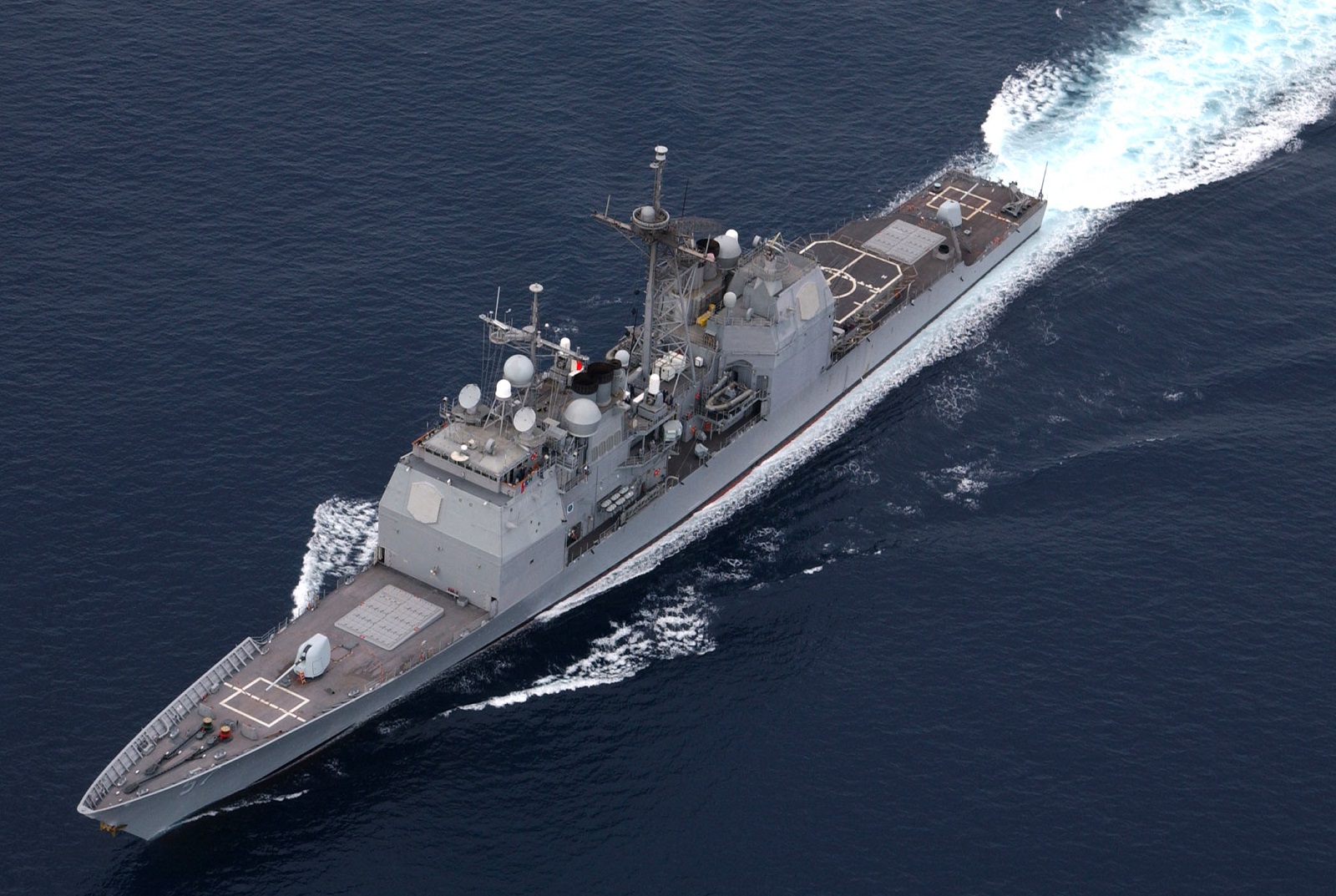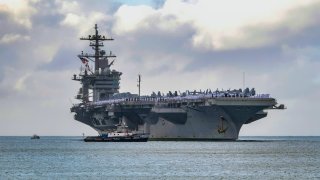South China Sea: Where a U.S. vs. China War Could Start
China's aggressive maneuvers in the South China Sea, exemplified by the June 18 incident involving Chinese Coast Guard officers attacking Philippine Navy boats, underscore its broader strategy of expanding influence and control in the Indo-Pacific.
Summary and Key Points: China's aggressive maneuvers in the South China Sea, exemplified by the June 18 incident involving Chinese Coast Guard officers attacking Philippine Navy boats, underscore its broader strategy of expanding influence and control in the Indo-Pacific.

-As Beijing aims to dominate the First Island Chain, it leverages its alliances and resources to counter US power projection.
-With significant economic and strategic interests in the South China Sea, including vast reserves of natural gas and oil, China is unlikely to relinquish its claims, posing a serious threat to regional stability and setting the stage for potential conflict, particularly over Taiwan.
China's Bold Moves in the South China Sea: Escalating Tensions with the Philippines
War is coming to the Indo-Pacific. It’s a question of “when?” and a question of “where?”
Many eyes are understandably focused on the Taiwan Strait and possible Chinese military action directed against the Taiwanese democracy. But the hostile actions by China are mostly directed in the South China Sea, fighting over control of rocky shoals that have been elevated to international crisis points, because they are in geostrategically important locations.
With knives and machetes in hand, on June 18, a group of Chinese Coast Guard officers interdicted a lawful Philippine Navy resupply of Philippine military forces stationed on the contested Second Thomas Shoal. According to the Associated Press, Chinese coast guard officers “rammed, boarded and used machetes and axes to damage two Philippine navy boats” at the disputed shoal of the South China Sea.
This represents a significant escalation on the part of Beijing’s forces operating illegally in Philippine territory. Of course, they do not care. With the Americans entirely distracted due to domestic political turmoil as well as crises elsewhere in Europe and the Middle East, Washington has no time to concentrate on what is a far more significant strategic threat: China.
The Philippine government, under President Ferdinand Marcos, Jr., understands that the Americans are essentially unavailable. Despite Beijing's clear provocation, Manila has already removed the prospect of invoking its mutual defense treaty with the United States in retaliation for Beijing’s clear provocation in the South China Sea.
But the region is increasingly holding its diplomatic breath.
China is Moving Throughout the Region
China is clearly up to something as the June 18 incident in the South China Sea comes just a week after Indian media reported of renewed fighting between Chinese and Indian soldiers stationed along the Indo-Chinese border in the Himalayas. In 2020, China and India fought a brutal brush for control over the region’s water rights.
Meanwhile, Japan’s government has accused Beijing of illegally deploying their coast guard vessels into Japanese territorial waters around the disputed Senkaku Islands in the East China Sea for two days on June 20 and 21.

Clearly, these are datapoints indicating wider escalation on the part of Beijing against the US-led regional alliance.
Unbelievably, earlier this week, Washington told the world that it was diverting whatever Patriot missiles and other interceptor missiles they had remaining in America’s rapidly emptying national arsenals exclusively to Ukraine. This not only leaves the embattled Israel in a lurch in the Middle East amidst escalating tensions, but it leaves all of America’s key allies in the Indo-Pacific in the cold as well.
China knows this.
Their new alliance with Russia allows Beijing to rest easy knowing that Eurasia has become dominated by two authoritarian, anti-American powers and that those two powers have an incredible industrial capability that the US-led alliance has lacked for decades.
Plus, with Russia’s alliance, China now has access to abundant, cheap supplies of all the major commodities it could ever need to fuel their war machine. With the alliance with North Korea, both China and Russia now have a cat’s paw to distract and threaten the Americans with nuclear war on the Korean peninsula (meaning that America can be stretched to its breaking point even more).
In this context, we see China’s strategic ambitions more clearly. Beijing means to take the coveted First Island Chain. From there, China will be able to keep the perceived threat of the US military’s power projection far over the horizon and Beijing will be able to project their own power beyond.
In 2008, it was rumored that the head of the Chinese Navy told the head of the US Navy that China intended to control everything to the west of Hawaii and would leave everything to the east to the United States.
Judging from how China has moved across the Indo-Pacific (and in the neighboring Indian Ocean), Beijing seems to be implementing this strategy.
The Importance of the South China Sea
The South China Sea is the southern lynchpin of the First Island Chain. From there, Chinese forces can repel any US military move against China (say, in the event of a Chinese attack on Taiwan). The South China Sea accounts for more than 60 percent of global maritime trade more than 22 percent of total global trade—and one third of global shipping.
With such a massive presence in that region, China has its finger on the pulse of the global economy.
What’s more, the South China Sea holds an estimated 190 trillion cubic feet of natural gas and 11 billion barrels of oil in proved and probable reserves (with even more potentially undiscovered). Dominating that patch of sea, therefore, would be a massive boon for China not just strategically but economically as well. In other words, China isn’t leaving the South China Sea anytime soon. And they’ll likely risk war to control it.
Moreover, Beijing can project its power into the Indian Ocean, putting pressure on their rising southern neighbor of India (Beijing strategists call this the “String of Pearls” policy). If China can control the South China Sea, though, they can put their forces in a key region of the First Island Chain.
Thus, China is moving boldly to push other claimants out of the contested South China Sea while enhancing their position there to better project power beyond.
The American Context
All this is in preparation for the ultimate move against Taiwan, which is likely coming sooner than Washington realizes.
Perhaps as early as this Fall, when the United States will be completely blinkered by what might end up being its most violent and chaotic election in history.
If that is how things go, then the world should expect China to solidify its iron grip on the South China Sea and then go hard against Taiwan
Author Experience and Expertise: Brandon J. Weichert
Brandon J. Weichert, a National Interest national security analyst, is a former Congressional staffer and geopolitical analyst who is a contributor at The Washington Times, the Asia Times, and The-Pipeline. He is the author of Winning Space: How America Remains a Superpower, Biohacked: China’s Race to Control Life, and The Shadow War: Iran’s Quest for Supremacy. His next book, A Disaster of Our Own Making: How the West Lost Ukraine, is due October 22 from Encounter Books. Weichert can be followed via Twitter @WeTheBrandon.
All images are Creative Commons or Shutterstock.
From the Vault
Russia Freaked Out: Why the U.S. Navy 'Unretired' the Iowa-Class Battleships
Battleship vs. Battlecruiser: Iowa-Class vs. Russia's Kirov-Class (Who Wins?)


